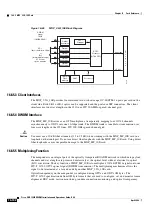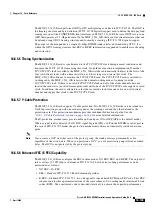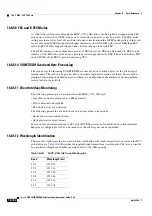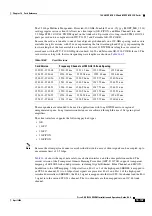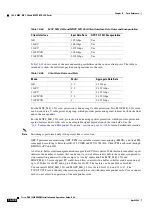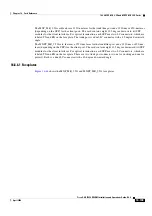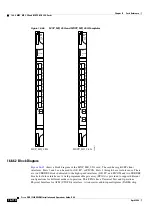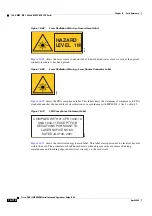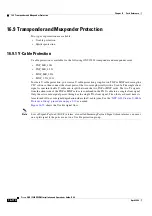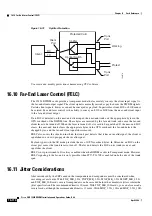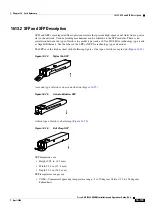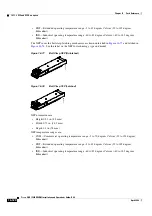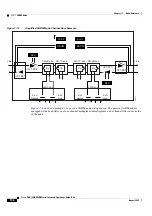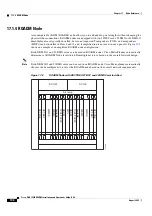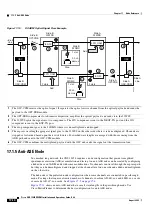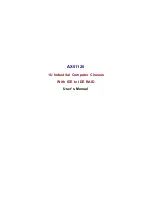
16-116
Cisco ONS 15454 DWDM Installation and Operations Guide, R6.0
April 2006
Chapter 16 Card Reference
16.10 Far-End Laser Control (FELC)
Figure 16-73
Splitter Protection
You create and modify protection schemes using CTC software.
16.10 Far-End Laser Control (FELC)
The 15454 DWDM cards provide a transparent mode that accurately conveys the client input signal to
the far-end client output signal. The client signal is normally carried as payload over the DWDM signals.
Certain client signals, however, cannot be conveyed as payload. In particular, client LOS or LOF cannot
be carried. Far-end laser control is the ability to convey an LOS or LOF from the near-end client input
to the far-end client output.
If an LOS is detected on the near-end client input, the near-end trunk sets the appropriate bytes in the
OTN overhead of the DWDM line. These bytes are received by the far-end trunk, and cause the far-end
client laser to be turned off. When the laser is turned off, it is said to be squelched. If the near-end LOS
clears, the near-end trunk clears the appropriate bytes in the OTN overhead, the far-end detects the
changed bytes, and the far-end client squelch is removed.
FELC also covers the situation in which the trunk port detects that it has an invalid signal; the client is
squelched so as not to propagate the invalid signal.
Payload types with the 2R mode preclude the use of OTN overhead bytes. In 2R mode, an LOS on the
client port causes the trunk laser to turn off. The far end detects the LOS on its trunk receiver and
squelches the client.
FELC is not provisionable. It is always enabled when the DWDM card is in Transparent mode. However,
FELC signaling to the far-end is only possible when ITU-T G.709 is enabled on both ends of the trunk
span.
16.11 Jitter Considerations
Jitter introduced by the SFPs used in the transponders and muxponders must be considered when
cascading several cards. With TXP_MR_2.5G, TXPP_MR_2.5G, MXP_MR_2.5G, MXPP_MR_2.5G,
and TXP_MR_10E cards, several transponders can be cascaded before the cumulative jitter violates the
jitter specification. The recommended limit is 20 cards. With TXP_MR_10G cards, you can also cascade
several cards, although the recommended limit is 12 cards. With MXP_2.5G_10G and MXP_2.5G_10E
Client
Protected Card
Working
Protect
Client
Port
RX
TX
Splitter
Optical Switch
Trunk
Port
Trunk
Port
124079
Summary of Contents for ONS 15454 DWDM
Page 38: ...Figures xxxviii Cisco ONS 15454 DWDM Installation and Operations Guide R6 0 August 2005 ...
Page 54: ...Procedures liv Cisco ONS 15454 DWDM Installation and Operations Guide R6 0 August 2005 ...
Page 64: ... 64 Cisco ONS 15454 DWDM Installation and Operations Guide R6 0 August 2005 Chapter ...

